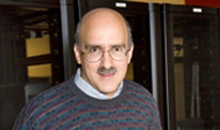Sabbagh Presents NSTX Talk at IAEA Fusion Energy Conference
 After serving as the NSTX Experimental Run Coordinator at PPPL, Steven A. Sabbagh, Senior Research Scientist and Adjunct Professor of Applied Physics, was given the honor to present the NSTX Physics Overview talk at the 2012 International Atomic Energy Agency Fusion Energy Conference.
After serving as the NSTX Experimental Run Coordinator at PPPL, Steven A. Sabbagh, Senior Research Scientist and Adjunct Professor of Applied Physics, was given the honor to present the NSTX Physics Overview talk at the 2012 International Atomic Energy Agency Fusion Energy Conference.
http://www.aps.org/units/dpp/meetings/vpr/2012/index.cfm
__________________________________________________________
He was also featured in the following APS DPP Press Release:
Fusion Plasma Works Best Just Where You Least Expect It
Scientists measure a surprising increase in fusion plasma stability at high performance
PROVIDENCE – A key challenge for fusion researchers has been to maintain the stability of the magnetically confined plasma gas that fuels fusion reactions as scientists elevate the plasma pressure to generate very large fusion power. Now scientists at the U.S. Department of Energy’s Princeton Plasma Physics Laboratory (PPPL) have measured an increase in plasma stability where it is least expected—at the high pressure that produces high fusion plasma performance.
This work, reported at the 54th APS Division of Plasma Physics Meeting, and the 24th International Atomic Energy Agency Fusion Energy Conference, challenges past scientific thought that efficient, high fusion power performance needs to be sacrificed to sustain
continuous energy production.
“Up to this point, scientists have believed that fusion power production needed to be reduced to sustain the energy output,” said Prof. Steven A. Sabbagh of Columbia University, who is on long-term appointment at PPPL’s National Spherical Torus Experiment (NSTX). “This result shows that you can indeed have both. The present result is somewhat like finding just the right way to stir a cooking pot to keep it hot, but prevent it from boiling over.”
Fusion powers the sun and stars. The process takes place when the atomic nuclei—or ions—in the plasma fuse and release energy. Scientists seek to reproduce this process on Earth by creating and controlling plasma inside powerful magnetic fields in fusion devices called tokamaks. Harnessing fusion in this way could produce a virtually limitless supply of clean energy for generating electricity.
Sabbagh and Dr. John W. Berkery of Columbia University, who also is on long-term appointment at PPPL, demonstrated their surprising result with the assistance of co-workers, and now are studying the process theoretically. The researchers performed their experiments on the NSTX before the facility was closed last year for an upgrade that is scheduled for completion in 2014.
The experiments turned up the plasma performance to a very high level that had been thought to be less stable. By using a special stability measurement technique, the scientists surprisingly found that these high performance plasmas in fact became more stable. Present analysis shows that a specific way the plasma rotates inside the machine creates the improved stability.
PPPL Director Stewart Prager remarked, “An historic challenge has been to elevate the plasma pressure to generate very large fusion power and keep the plasma stable. We are encouraged by this fascinating new physics regime in which the pressure is very high, but
the plasma stability increases.”
The result is especially good news, as it may have uncovered a new way to design devices with both high fusion performance and high stability. “Understanding this result may allow us to create similar rotation conditions in new machine designs that may finally produce more energy than they use,” Sabbagh said. “Fusion devices have been significantly limited by stability, and creating the conditions needed to produce this enhanced stability may allow these devices to run more economically.”
APS, Media Contact: Saralyn Stewart
